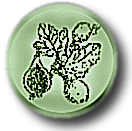Subsystem: Synechocystis experimental
This subsystem's description is:
Hypothesis: The At1g13820/At5g39220/sll1129 protein family (predicted alpha/beta hydrolases) seem to be involed in cell cycle regulation and differentiation in plants and cyanobacteria (possibly via Phosphatidylinositol signaling system, membrane biogenesis or trafficking?)
Observations:
1. The alpha/beta hydrolase superfamily in cyanos is represented by multiple paralogs (an attempt to disambiguate them was made in this Subsystem). The subgroup which includes Arabidopsis genes At1g13820 and At5g39220 is annotated here as "Possible alpha/beta hydrolase superfamily, sll1129 homolog". It's members are present in ALL cyanos, even the ones with small genomes. Only in cyanos.
2. Based on TargetP predictions for these AT genes, AT5G39220 seems to be targeted to chloroplast (lumen??), while At1g13820 is possibly in cytoplasm
3. Phyletic spread: Clear homologs of At1g13820 and At5g39220 are present ONLY in cyanos and plants; they form small gene families in each cyano genome (disambiguated in SS: Synechocystis experimental)
4. The closest characterized homolog [rather distant: 7.2e-19 (27.89%)] is in P. putida:
fig|351746.4.peg.2836: 2-hydroxymuconic semialdehyde hydrolase (EC 3.7.1.9) of of toluene degradation. But this function is unlikely to be preserved in the cyanobacterial and plant distant homologs
5. Gene clustering in cyanobacteria (inpite the fact that these leads are rather weak, as it is common in these organisms), points to association of the At1g13820/At5g39220/sll1129 protein family with cell cycle regulation and differentiation:
(i) with ATP-dependent Clp protease, ATP-binding subunit ClpC (shown to be a pleiotropic regulator in B. subtilis (Msadek et al., 1994; Rashid et al., 1996)
(ii) with Phosphatidate cytidylyltransferase (potentially associated with phosphatidylinositol signaling system??)
(iii) Hypothetical protein YbbP, contains nucleotide-binding domain of DisA bacterial checkpoint controller
6. These weak gene clustering leads seem to be confirmed by co-expression data in AT (from http://atted.jp), where AT5G39220 is co-expressed with:
(i) At3g02310 -SEPALLATA 2 - one of AT MADS domain proteins, global regulator involved in flower and ovule development (PMID: 14555696)
(ii) At5g62230 - ERL1 - receptor-like kinase that, together with ER and ERL2 governs differentiation in protodermal cells
(iii) At4g17480 - palmitoyl protein thioesterase family protein
(iv) and others
BUT no coexpression with At5g50920, plant ClpC homolog (targeted to chloroplast)
No expression data are available for At1g13820.
References
Msadek T, Kunst F, Rapoport G.
MecB of Bacillus subtilis, a member of the ClpC ATPase family, is a pleiotropic regulator controlling competence gene expression and growth at high temperature. Proc Natl Acad Sci U S A. 1994, 91(13):5788-92. PMID: 8016066
Rashid MH, Tamakoshi A, Sekiguchi J. 1996. Effects of mecA and mecB (clpC) mutations on expression of sigD, which encodes an alternative sigma factor, and autolysin operons and on flagellin synthesis in Bacillus subtilis. J Bacteriol. 1996 Aug;178(16):4861-9. PMID: 8759849
For more information, please check out the description and the additional notes tabs, below
| Diagram | Functional Roles | Subsystem Spreadsheet | Description | |||||||||||||||||||||||||||||||||||||||||||||||||||||||||||||||
Oops! We thought there was a diagram here, but we can't find it. Sorry
Hypothesis: The At1g13820/At5g39220/sll1129 protein family (predicted alpha/beta hydrolases) seem to be involed in cell cycle regulation and differentiation in plants and cyanobacteria (possibly via Phosphatidylinositol signaling system, membrane biogenesis or trafficking?) Observations: 1. The alpha/beta hydrolase superfamily in cyanos is represented by multiple paralogs (an attempt to disambiguate them was made in this Subsystem). The subgroup which includes Arabidopsis genes At1g13820 and At5g39220 is annotated here as "Possible alpha/beta hydrolase superfamily, sll1129 homolog". It's members are present in ALL cyanos, even the ones with small genomes. Only in cyanos. 2. Based on TargetP predictions for these AT genes, AT5G39220 seems to be targeted to chloroplast (lumen??), while At1g13820 is possibly in cytoplasm 3. Phyletic spread: Clear homologs of At1g13820 and At5g39220 are present ONLY in cyanos and plants; they form small gene families in each cyano genome (disambiguated in SS: Synechocystis experimental) 4. The closest characterized homolog [rather distant: 7.2e-19 (27.89%)] is in P. putida: fig|351746.4.peg.2836: 2-hydroxymuconic semialdehyde hydrolase (EC 3.7.1.9) of of toluene degradation. But this function is unlikely to be preserved in the cyanobacterial and plant distant homologs 5. Gene clustering in cyanobacteria (inpite the fact that these leads are rather weak, as it is common in these organisms), points to association of the At1g13820/At5g39220/sll1129 protein family with cell cycle regulation and differentiation: (i) with ATP-dependent Clp protease, ATP-binding subunit ClpC (shown to be a pleiotropic regulator in B. subtilis (Msadek et al., 1994; Rashid et al., 1996) (ii) with Phosphatidate cytidylyltransferase (potentially associated with phosphatidylinositol signaling system??) (iii) Hypothetical protein YbbP, contains nucleotide-binding domain of DisA bacterial checkpoint controller 6. These weak gene clustering leads seem to be confirmed by co-expression data in AT (from http://atted.jp), where AT5G39220 is co-expressed with: (i) At3g02310 -SEPALLATA 2 - one of AT MADS domain proteins, global regulator involved in flower and ovule development (PMID: 14555696) (ii) At5g62230 - ERL1 - receptor-like kinase that, together with ER and ERL2 governs differentiation in protodermal cells (iii) At4g17480 - palmitoyl protein thioesterase family protein (iv) and others BUT no coexpression with At5g50920, plant ClpC homolog (targeted to chloroplast) No expression data are available for At1g13820. References Msadek T, Kunst F, Rapoport G. MecB of Bacillus subtilis, a member of the ClpC ATPase family, is a pleiotropic regulator controlling competence gene expression and growth at high temperature. Proc Natl Acad Sci U S A. 1994, 91(13):5788-92. PMID: 8016066 Rashid MH, Tamakoshi A, Sekiguchi J. 1996. Effects of mecA and mecB (clpC) mutations on expression of sigD, which encodes an alternative sigma factor, and autolysin operons and on flagellin synthesis in Bacillus subtilis. J Bacteriol. 1996 Aug;178(16):4861-9. PMID: 8759849 | ||||||||||||||||||||||||||||||||||||||||||||||||||||||||||||||||||




